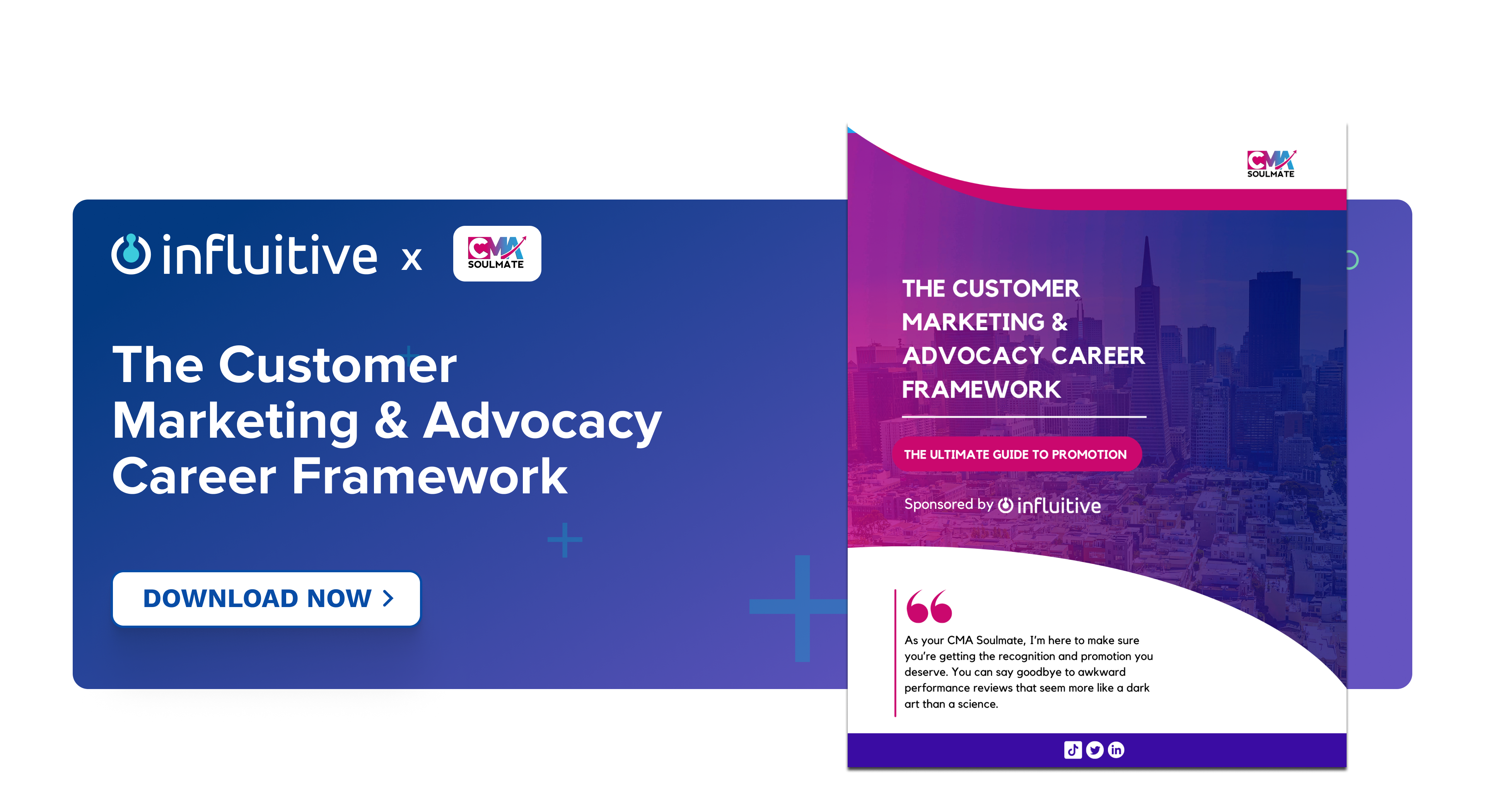In today’s competitive business landscape, being customer-centric is crucial for success. Understanding and meeting the needs of your customers is the key to building strong relationships, driving growth, and fostering customer loyalty.
We recently reflected on advice from the first-ever Elite 18 customer-led CMO award-winners on how to be a more customer-centric leader. We also asked our Fearless 50 customer-led marketing leaders to share how they prioritize customer-centricity within their business.

In this post, we’ll guide you through a series of actionable steps you can take to become a customer-centric organization based on their advice.
#1. Deliver Exceptional Value and Experiences
Don’t just meet customer expectations, exceed them. At every touchpoint, aim to be informative, approachable, and delightful. Create memorable experiences that leave a lasting positive impression. Focus on building strong relationships, maintaining regular communication, and constantly seeking feedback to continuously improve the customer journey. Craft messaging focused on addressing their needs and making them the heroes or heroines of the story through your solutions.
Whether it’s in person at events online, in our community, or 1:1 with our product managers, we want customers to know that they’re at the heart of everything we do and everything we’re doing is to benefit them. – Melissa Henley, Vice President of Customer Experience, Luxio
Creating a post-sale customer experience that consistently spotlights the value that our customers are achieving and working with our product as well as our organization and just creating better engagement across our customer landscape. – Asha May, Limited Partner, Stage 2 Capital Catalyst
Keep the entire customer journey in mind from acquisition all the way through retention. Where are the points in that journey where we can be informative, approachable, mindful, and even delightful? – Sara Strope, CMO, QuotaPath
You can do this at scale by orchestrating a customer’s journey, highlighting their successes, and allowing them to inspire the rest of your install base through their recorded and live engagements. Of course using customer loyalty software that lets you recognize and reward customers for engaging with your product, content, and teams makes it easier, but you can do this manually to start. Consider opportunities where you can surprise and delight your customers. For example, we send a special boomerang to returning customers to show appreciation for their loyalty.
#2. Listen Intently to Understand Your Customers’ Needs
It’s incredibly important to listen to customers so you can comprehend their needs, challenges, and business objectives. This helps you provide relevant solutions tailored to customers’ desired outcomes.
Whether it’s sitting on calls with our salespeople, attending events where our customers are and where they’re speaking, or going to dinners and making sure that you’re giving them enough time to understand pain points and hearing them say their pain points in their own words, and then being able to tailor your messaging more closely to address their needs is gonna get you success. – Rebecca Stone, SVP, Customer Solutions Marketing, Cisco
Approach with intentionality by truly understanding your customers, you can help guide them towards achieving the desired state, their desired state. You can effectively meet their expectations and deliver exceptional experiences. – Robb Mapp, Sr. Director, Customer and Insights Marketing, Github
A customer-first marketing strategy begins and ends with understanding the why, the what, and the how. That means understanding why customers engage with our products, what problems they have, and how we can help solve those problems. – Mary Kay Evans, CMO, Alida
#3. Facilitate Direct Customer Feedback
Alongside proactive listening, conduct thorough market research, analyze customer feedback, and utilize data analytics to gain valuable insights. Use this information to identify pain points, preferences, and expectations. You can also solicit insights directly through reviews, communities, check-ins, advisory boards, and more. Allow unfiltered customer perspectives to shape your strategy and guide improvements.
I would have to say that our number one priority is to listen to our customers through all kinds of channels, whether it’s through anonymous reviews from third-party review sites, our own community conversations, 1 to 1 check-ins, or even through more formal interactions such as through our executive sponsor program or our advisory boards. We’re always listening. Our customers are our lifeblood and their insights are pure gold. – Amy Payne, VP Global Customer Partner and Events Marketing, TalkDesk
It’s important to reach out to them to get insights, ideas, and feedback that will help you succeed with your strategy in terms of business objectives and alignment with customer needs and expectations. And the end result will be bigger value for your customers, better customer experience, and better return on investments. – Stefania Cugini, Senior Director, Global Customer Advocacy and Loyalty, VMware
You can do also this through 1:1 discussions, or through feedback surveys that can become powerful profile fields and data you can use to provide relevant and personalized content and rewards to them.
#4. Amplify Customer Voices
Make your customers the heart of everything you do. Continuously listen to them through various mediums and channels. Gather insights, ideas, and feedback from your customers to gain a deeper understanding of their needs. Use their feedback to drive improvements and innovation, and stay ahead of the competition. Let customers tell their authentic stories. Their voices are more powerful than your company’s content and messages. Promote user-generated content and cultivate customer advocates.
When it comes to building a marketing strategy that is customer first, it’s all about scale. You have to flood the market with social proof, you have to flood the market with those customer stories – Allyson Havener, VP of Marketing, TrustRadius
It’s not about the company or the logo, it’s about the people, the folks who are building integrations and automation using Workato. It’s those folks who are driving outcomes using Workato. It’s those folks who are championing Workato. And how can we really showcase them as heroes and tell their stories. – Bhaskar Roy, CMO, Workato
Keep tabs on what your customers are saying about you on social channels, inside other communities, on third-party review sites, and more. This is a great way to find advocates for your brand. Then, by using a customer advocacy program, you can provide customers with opportunities to showcase their thought leadership with social amplification and user-generated content including reviews.
#5. Hire Team Members that Foster Customer Empathy and Passion
Hire for emotional intelligence and commitment to customers’ success. Take time to walk in customers’ shoes and see through their lens. Make decisions based on their perspective.
It is all about the team. You have to not only hire talent that has the right expertise and knowledge, but you also have to find people that have the passion for doing the right thing for the customer, the passion to want to actually help in their communities. – Brenda Hodge, CMO, Nuance Communications
If you talk to anyone here at PartnerStack, they can easily step into the shoes of our customers and make decisions based on their perspective. Empathy guides us in creating memorable experiences and having a lasting impact on our customers. Without empathy and without hiring for empathy, you simply can’t claim to be a customer-first organization. – Tyler Calder, CMO, PartnerStack
Allowing your employees to lead with gratitude is a surefire way to nurture your customers into loyal advocates and build authentic and lifelong relationships. If you’re looking to hire your very first customer marketer, The Customer Marketing & Advocacy Career Framework is a great resource to help you identify and define the core competencies needed from entry-level all the way to a leadership position.
#6. Build Trust and Lifelong Relationships
Focus on building strong relationships, maintaining regular communication, and constantly seeking feedback to continuously improve the customer journey. You’ll earn trust by delivering consistent value, compassion, and humanity. Make each interaction an opportunity to nurture the relationship and demonstrate that you care.
And with that humanity comes the desire to build trust in relationships. And every touchpoint, every engagement, every interaction we have with a customer is an opportunity to build that trust. And those two combined are an incredible underpinning of a customer-first marketing strategy. – Sarah Acton, CMO, BILL
The better that we can do to help customers be more successful in their jobs, the more strategic we are going to become to them and the more value we provide to them. So every touch point from a marketing perspective has to deliver on that and build a great friendship, build trust, and ultimately build a relationship that will last a lifetime. – Dan Lowden, CMO, HUMAN Security
We know that people do business with those they know, like, and trust — so foster that ecosystem. Building a customer community is a great way to bring customers together to not only forge relationships with each other but also with you and your brand. But communities will only truly thrive if trust and authenticity are a part of your strategy. Thoughtfully crafting a unified brand that your customers can rally behind will also help you build a stronger community.
#7. Provide Unmatched Value
Go beyond providing products or services – offer advisory, advocacy, and adoption support. Become a trusted partner who actively helps customers become heroes in their organizations. Provide valuable insights, recommendations, and support to ensure they derive maximum value from your solutions. Prioritize helping them achieve their goal
My philosophy for a great customer marketing strategy is really three things. I call it the AAA — which is advisory, advocacy, and adoption. If you can do all three of those things and make your customers heroes in their organization, customers are your lifeblood. That is a winning strategy! – Karen Steele, Founder of Steele-Alloy and Fractional CMO
I think it’s important for marketers to understand that when they ask customers to advocate on behalf of their company and their brand, they do not position it as asking the customer to do them a favor. Right? You really need to pitch the value that the customer will get out of participating in that activity. – Jim Fields, Vice President, Customer Advocacy, Workday
Providing exclusive opportunities to your most passionate customers is a great way to reward them for their contributions. Thought leadership opportunities like first-person customer stories give your customers the ability to tell their success from their perspective and make them the champion of their story. Delivering a gamified customer experience using levels, points, and badges can also help you personalize their experience and drive deep brand loyalty.
#8. Adopt a Customer Mindset
Put yourself in the shoes of your customers when creating marketing campaigns, strategies, and messaging. Evaluate decisions based on how customers will experience programs. Champion the customer perspective across the organization.
My goal is to get everyone in the organization to shift their thinking from inside out to outside in. This gives them focus and the ability to look at their work, not through the internal lens of who they have to work with or what the business processes look like, but rather through the lens of experience and the way that customers and other audiences will experience that work. – Johann Wrede, Chief Experience Officer, Emburse
My number one priority when it comes to engaging customers from a customer-led growth strategy is really thinking about how we support our customers at every stage of their journey, particularly to support retention, value, realization, and customer love. – Kevin Lau, Senior Director of Global Customer Engagement, F5
One of the things that can be really hard at first is getting people on the bus with you, so look around, look at everything through the customers’ eyes. But it’s really the most important thing that you can do. It will make sure that all your programs are deployed with authenticity, which is something that everyone will expect and will respond better to. – Gillian Farquhar, Vice President, Customer Transformation, Qlik
Putting on your customer hat will allow you to understand What’s In It For Them (WIIFT), allowing you to better resonate with them, leading to deeper engagement and adoption.
Conclusion
Becoming a customer-centric organization requires a mindset shift and ongoing commitment. You are never done crafting your customers’ journey as it’s always evolving with the ever-changing business landscape. By following these steps, you will be well on your way to creating exceptional customer experiences, driving customer loyalty, and ultimately, achieving business success that can be iterated upon and optimized continuously. Remember, it’s all about putting the customer at the center of your organization’s vision and activities.














































